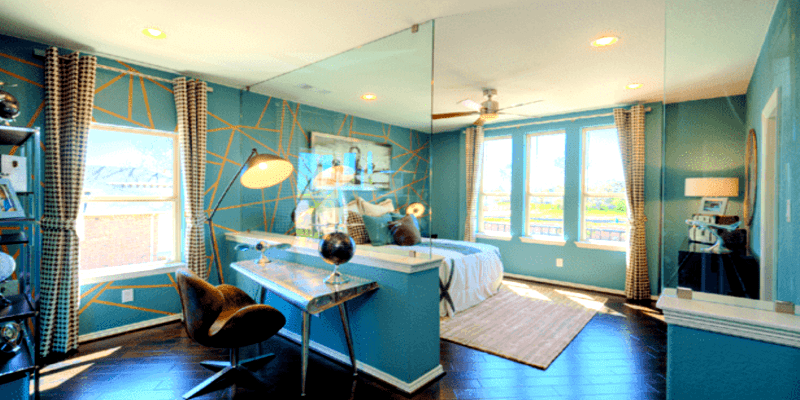You should spend a fair deal of time in the lounge of entertaining and when it comes to living room design, it is easily the living room design in your house. You could be distracted by adding together all pieces to make your house a harmonious and attractive whole if you just began to think about living room design and the list first is your living room. For the walls, what sort of furnishings you already have and how you need them to be arranged and accessorized, you have to remember paint colors. But what’s your decoration theme first to find out for yourself. Support you do that by viewing pictures of the living room design. Knowing this, you can signal your furniture, paint colors, cover windows, cover, and accessories along the decoration route. Read six fundamental tips about how to start thinking about your living room design.
1. Measuring
- Either the room you work in, whether it be tea towels, window treatments, or furniture, make sure you know it’s perfect dimensions and the height of the room where you intend to put the pieces of furniture.
- Nobody has memorized everything and nothing is fixed in stones, but a useful guide to consult it if appropriate is a very useful concept. Regulations have good direction, but eventually, you have to do what is best for yourself and that’s what you want most. That’s the most important thing for the living room design.
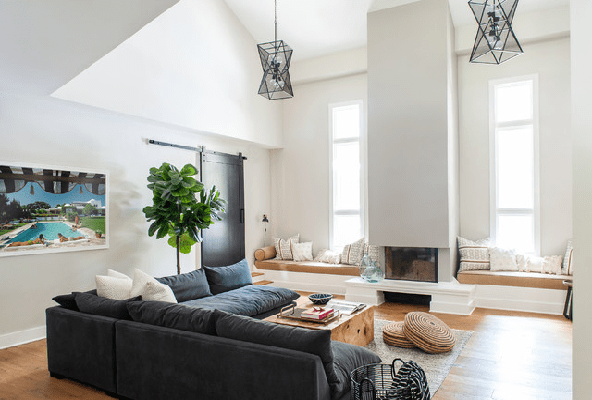
Check Measurement Tools on Amazon
2. Colors Paint of Your Living Room Design
- The choice of the right color is something in which many people struggle because if there is one thing most people get worse, it is first the choice of the paint.
- Painting is relatively straightforward (painting can be a pain for living room design, however), and cheaper, so first choose the costliest works and then choose a color based on them.
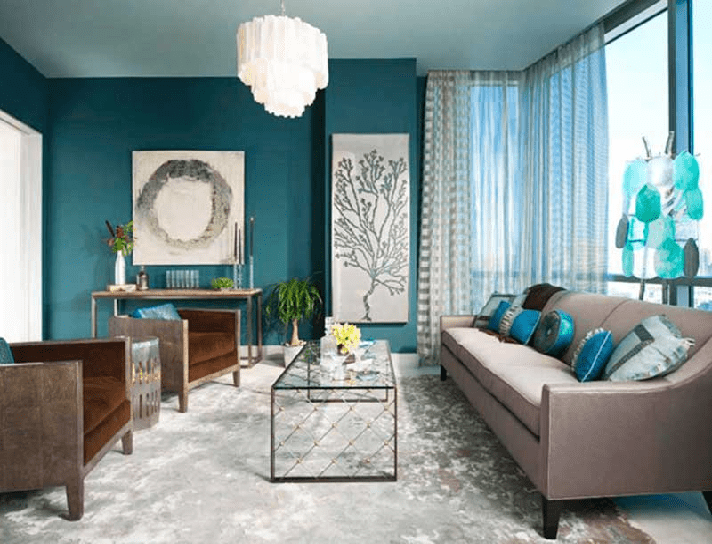
Check Living Room Paint on Amazon
3. Rugs Area
- Area rugs can be a huge concern and a nightmare in the architecture of your living room. There are several reasons why it is important to use them, just make sure that you know all thumb rules for area rugs before buying anything simply because you like it.
- For any area rug, the scale is the most crucial consideration. If a section of the hut is too thin, the entire space will appear disconnected to ensure that you know the correct scale and organization of the furnishings.
- Both furnishings should be on top of the rocket and between the edges of the area rug and the space walls should be about 10-20 centimeters of bare ground.

4. Art
- Empty walls symbolize unfinished space for the construction of the living room. You don’t have to fill all inches but it’s necessary to decorate the walls with art.
- It’s crucial, however, to deliver a pleasing and cohesive look that does not have to be expensive. What a person thinks about art can be far from what everyone feels.
- The easiest thing to do is follow your instincts as far as what you want and what is going on in your bed is concerned. Get aware of the basic rules of what you are hanging from and how to arrange it.

Check Living Room Art on Amazon
5. Living Room Furniture
- A common problem is how to arrange furnishings in your living room. More frequently than not, there is a sofa on one wall, a couple of seats on the other, this is it.
- However, something has to be prepared a little further to organize furniture. A central location is required, discussions are needed and the traffic flow needs to be understood.
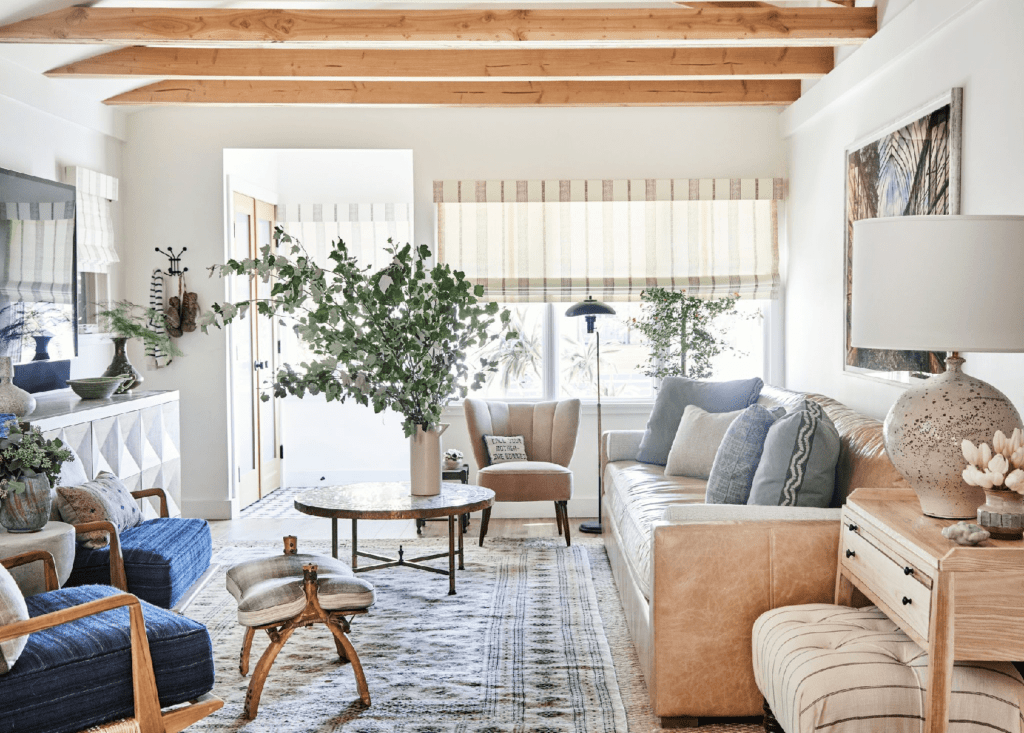
Check Living Room Furniture on Amazon
6. Living Room Illumination
- Lighting is an aspect in a space that is very complicated. It is less than in more utilitarian living room design such as kitchens in the dining rooms, but essential aspects are also not to be forgotten.
- Above everything, each of the three major lighting styles should be included: setting, mission, accent. Light sources around the room should be positioned at various heights. Consider overhead lamps or recessed lamps, table lamps and floor lamps, and wall sconces.
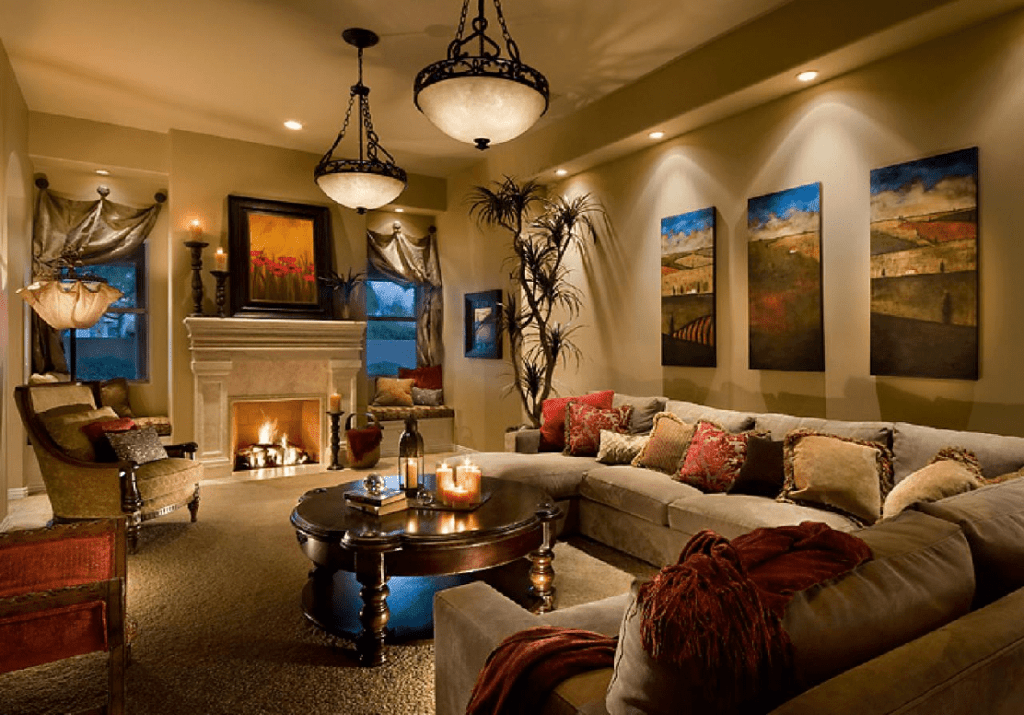
Check Living Room Illumination on Amazon
Your living room should be the place you feel relaxed in, let down and spend quality time with friends, your families, or just yourself, regardless of whether your style is conventional or contemporary. A space that looks wonderful and fits well for you is designed with a craft. So, surround yourself with a few designer tricks before you immerse yourself in a redesigned living room design with your pro.
Some of my essential and favorites are here:
1. Combine Dark and Bright
If a living room is white and luminous, it may sound so sterile and unfit. It may feel like a cave when it’s all dark. But combining the colors of dark and light provides a deep and equilibrating dramatic look. At least a little white and a little black is used in the living room design.
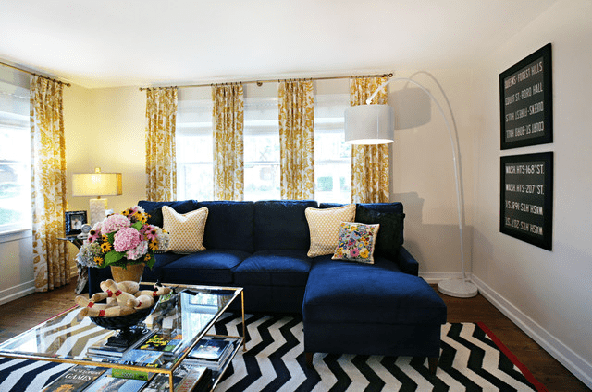
Check Bright Living Room Illumination on Amazon
2. The Neutrals Compare
In addition to some white and some black, it takes a long way to make the living room romantic and inviting with different contrasting neutrals. In this example, the white walls, the fresh leather, the brass hardware, the Gray couch, and the blue-gray cabinet all contrast each other. Well before the color, pattern and texture are applied, the palette feels rich.
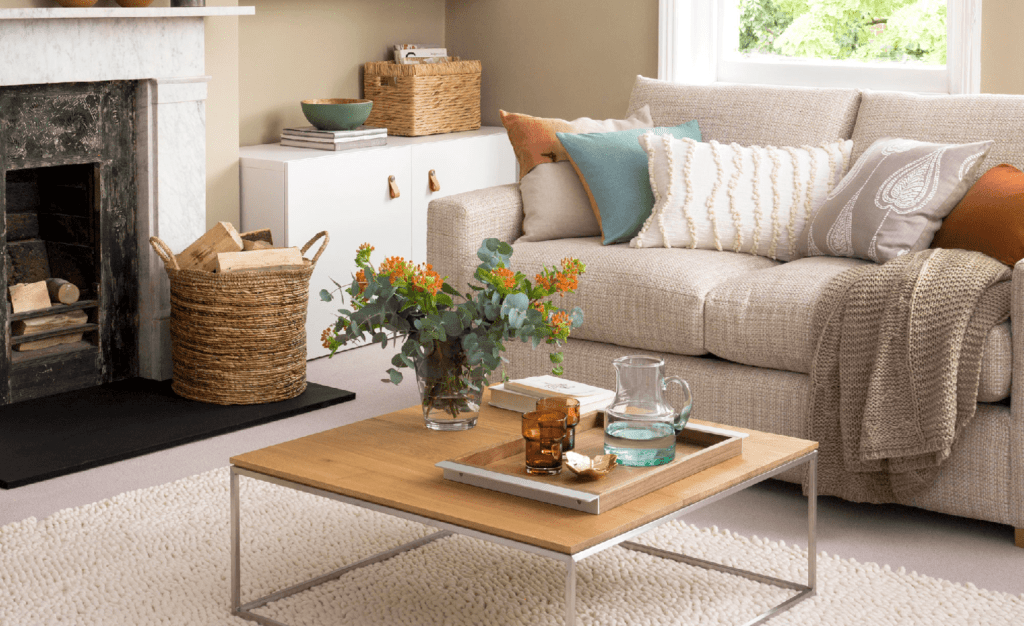
Check Neutrals Living Room Illumination on Amazon
3. Texture Meets
- When decorating a living room, the texture is easy to miss because we can’t see it that much that we can touch it. But for a living room to feel comfortable. It is necessary for plump textures that appeal to touch and tougher textures that add contrast. Includes, as many other textures as possible, leather, cloth, fur, metal, stone, glass, plant life for the living room design.
- Pillows are an excellent starting point, particularly if a living room is designed on a budget. Look for other accessories and furniture, even at small doses, to bring additional content to the range.

Living Room Textured on Amazon
4. Some Wood Work
- Without talking about wood, we cannot speak about texture, one of the top kinds of stuff for warming a living room.
- There are so many ways of adding wood, one of which is a little more welcoming for a location. Take as only a few choice wall paneling, lateral chairs, movable stools, photo sets, sofa legs, and carving works of art for the living room design.
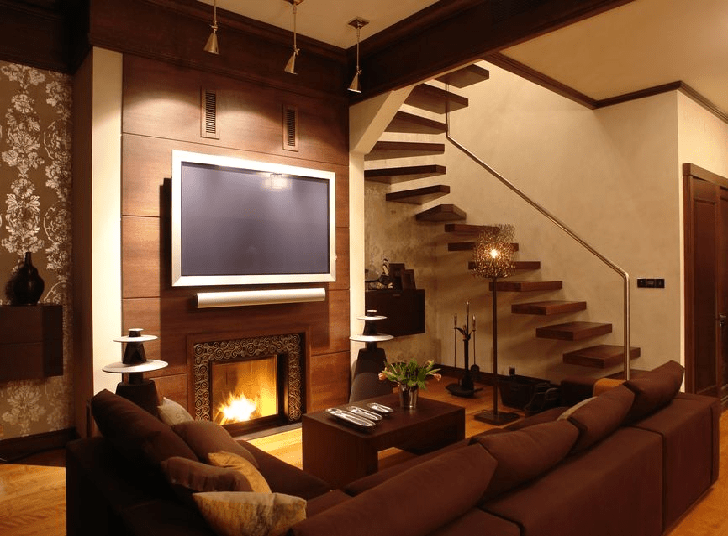
Living Room Wooden Set on Amazon
5. Mix Up The Padding Up
- Sure, most furnishing shops allow you to purchase a whole living area in matching polishing, but you shouldn’t do that. The matched cover will give you a feeling of maturity and order in a formal seating environment, but if you want to have a living room design that is comfortable and inviting, mix and match your upholsters so that the look becomes more intimate.
- One of the best means is to blend leather chairs with a silk sofa or vice-versa so that the fabrics intentionally contrast. There is some variety in the living room style, which also offers different choices for family members to accommodate their seating needs.
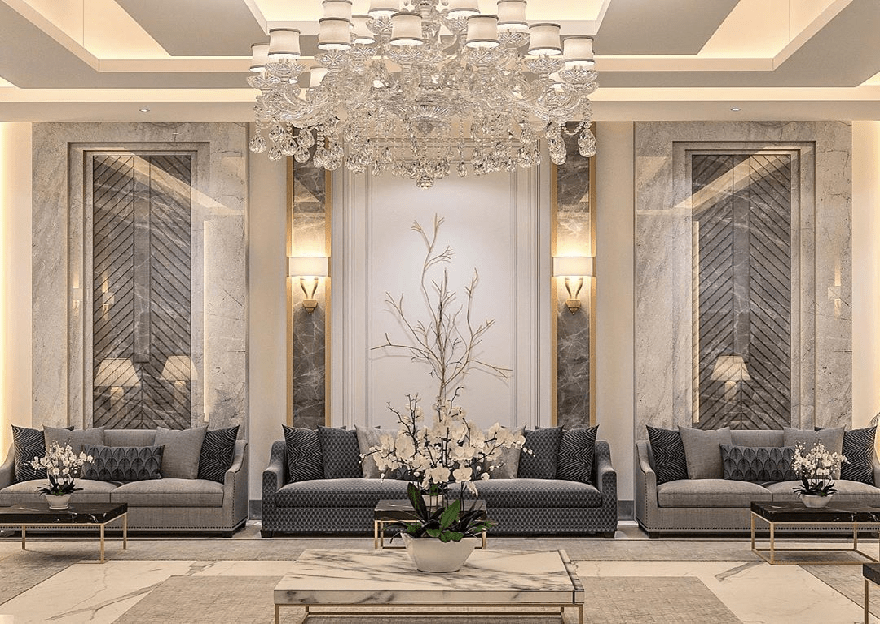
6. Choose Hands-on Fabrics
- In terms of upholstery, it is necessary not only to be comfortable but sturdy for living room seating. It depends on the culture, what this entails. You could have children, pets or not, and they could be dirty or clever. Generally speaking, mid-tone fabrics are the most reliable bet, since soil wears rather light or dark colors.
- Leather is excellent to deter stains and when a spill happens, it is easy to wash it cleanly. It is typically scratched more readily than most materials, though, and does not survive animals either. A leather with a split look or pattern can grow particularly well. Denim and corduroy are two more fabrics, inviting but lasting.
- In comparison with the often-bland cotton or wool padding, they give a surprising twist. When you pick fabrics for your furniture in the living room, search for materials with a mixture of natural and synthetic fabrics and find the functional properties of the two.
- Then mix the fabric swatch, if necessary, to ensure that it is tight and that the support content is not exposed. A close fabric can last longer than a loose one (which leaves plenty of room to cover dirt), irrespective of content.
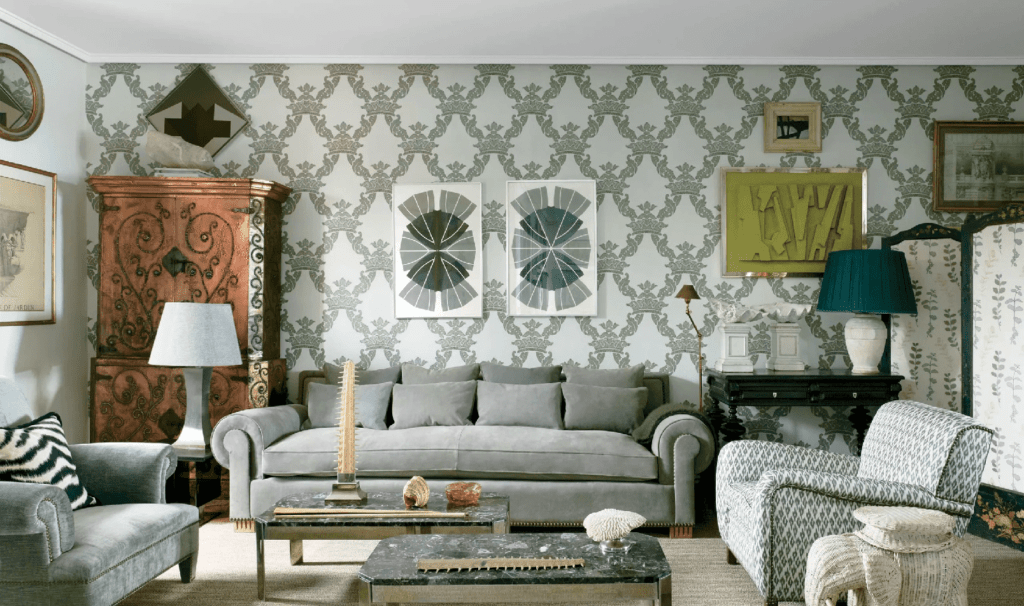
Living Room Hands-On Fabrics on Amazon
7. Color Dash Connect
- Although you can build a lovely space without bright colors, the addition of even a bit of color to a living room can make a calming and welcoming experience possible.
- Look for a happy blue in any case – it is a nuance that everyone will normally agree on. It contrasts well with warm elements such as leather and wood and looks neutral enough to practically fit with any additional possible colors.
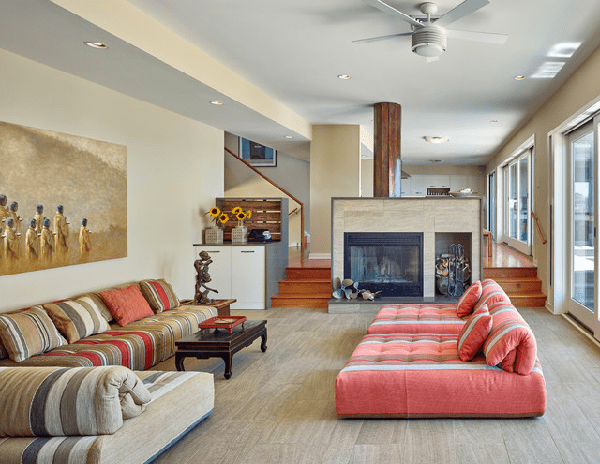
8. Incorporate The Rug Modeling
- The pattern is a versatile design method that infuses energy into a living room and eliminates the presence of stains or wear. A sculptured roughing board, at the same time rooted in a seating area and supplying the entire space with a sense of life, gives these advantages to the “fifth wall.”
- Dream by adding a rocker to your seating area even though your carpet still exists. You would be happy to get it the first time that you roll it to the cleaners after a large leak.
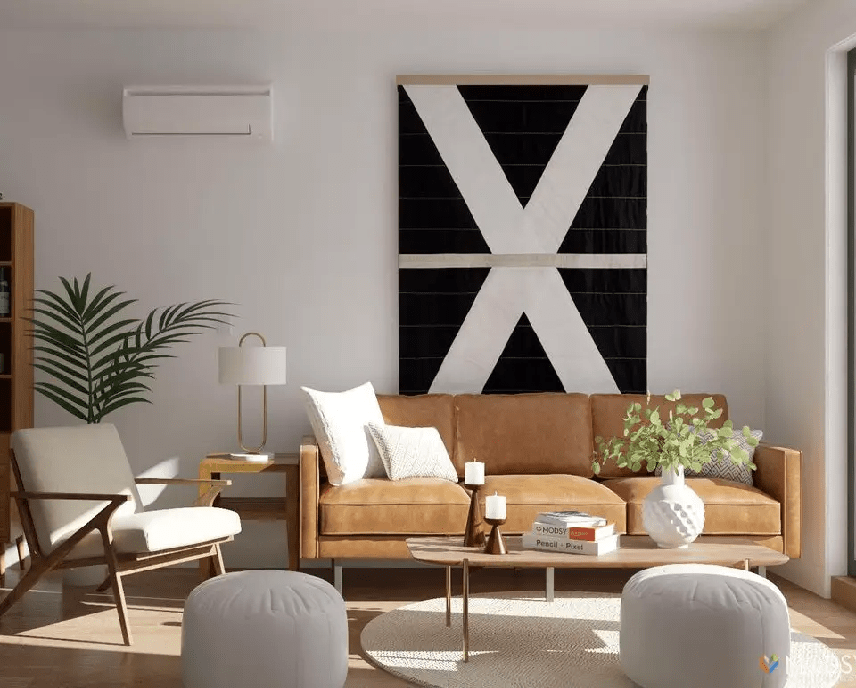
9. Choose Moving Tables and Instruments
- Lightweight tables, stools, ottomans and even side chairs that can be conveniently moved make your living room a lot more versatile and offer you and your family a wide array of everyday choices to sit your feet on, drink or seat an extra visitor.
- To move the parts closer and further away from the main seats as appropriate, use a few smaller parts, such as the paddy-padding stands seen here.
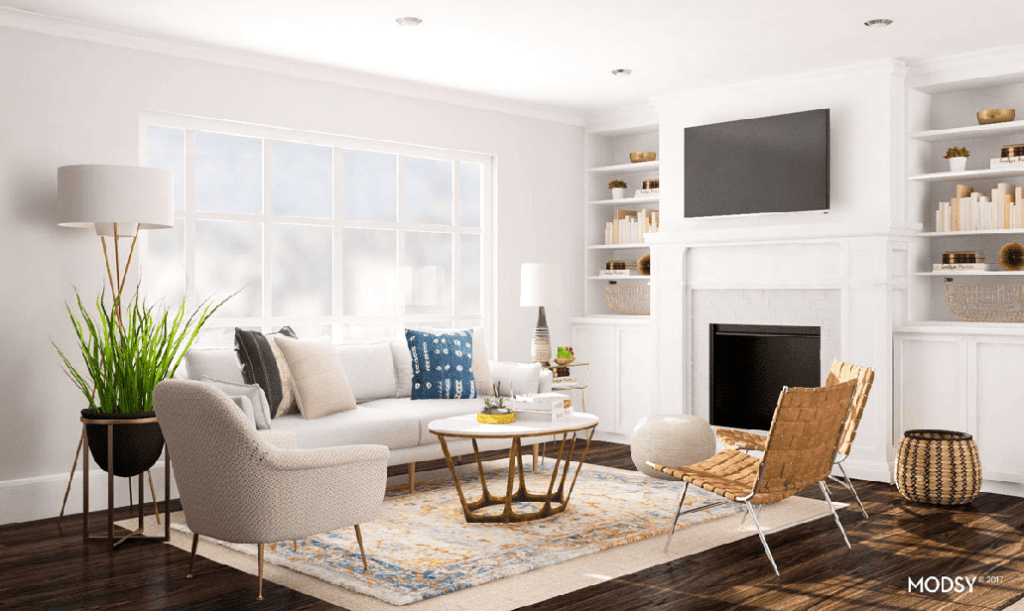
Living Room Table Movers on Amazon
10. Consider Distances From The Conversation
- No matter how huge the living room is, how large a seating group is, how much intimate interaction and comfortable meetings still make sense. A reasonable distance from the chair for discussion is around 8 feet, so that the sitting area can be 8 feet in diameter or 4 feet away from the middle if you have multiple sofas or a sofa and side chairs for the living room design.
- An enormous, 12-seat sectional sofa might look fantastic for a wedding, but it is normally better to use fewer small seating parts and put them a little more closely together if you want to make a comfortable living space.
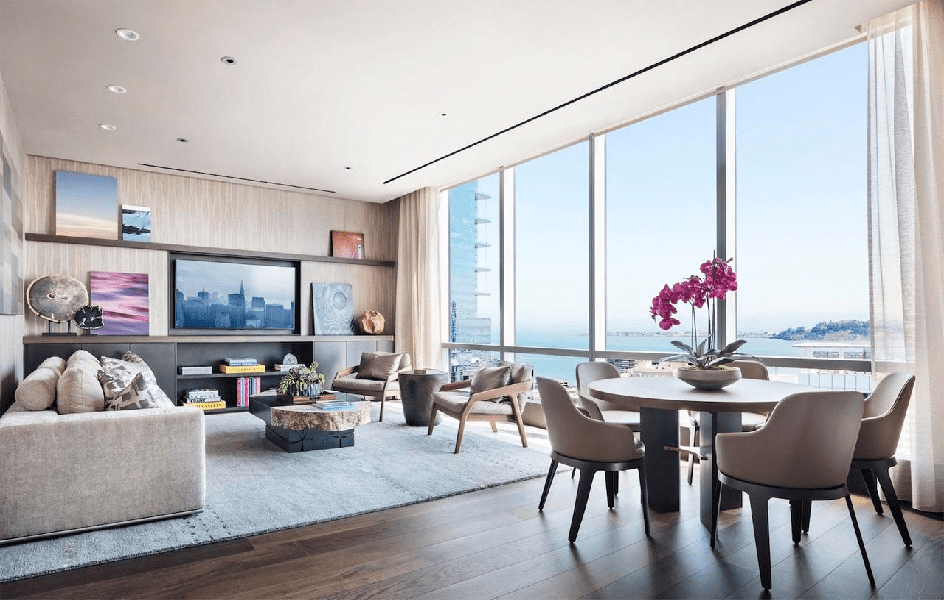
11. Find Out Your Style
- How would you like to feel in a room? Here is a hack to help you get your look right: Taking a wardrobe look. Do you prefer custom parts or you prefer more relaxed and looser items? Are you gravitating to certain colors or living room designs?
- Another way to decide your style is to consider keywords that determine how you feel about a room. Typical, structured, stylish? Humorous, fun, playful? Modern, fluency, monochromatic?
- In any aspect of life take care of fashion inspirations. Often, I use these as a point of departure when I’m engaged to explore with customers how to plan their houses. Remember a hotel where you stayed or a restaurant where you ate, which particularly felt your desire. Maybe your ride to Japan was a very limited interior or a clubby bar in New York with worn leather chairs.
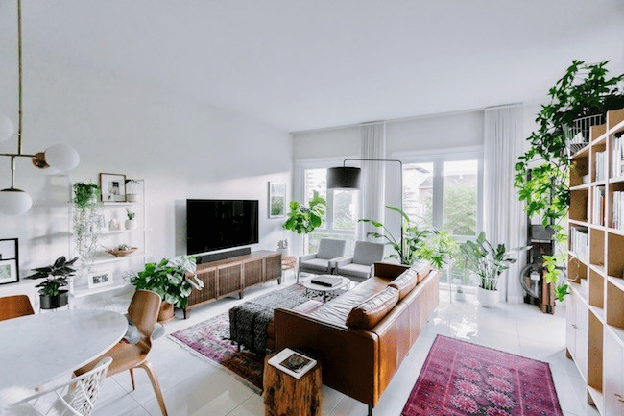
12. What You Don’t Want To Figure Out
- People may show what they do not want much better. We will exclude certain aspects and narrow others by placing dislikes within the equation. An audacious big print, for example, might remind you of what you don’t want to see in your room during your childhood.
- Or a wingback chair could recall when you were dispatched to time-outs to tug the hair of your sister. Similarly, color can invoke a past fashion theme that you don’t want to replicate. These memories and responses are very individual and intimate, but they still determine our tastes.
13. Build Your Room All Over
- Particularly relevant is space planning, which affects size. Many people use too big or too small furniture for one room. For the great furnishings that saturate interior design today, I want to blame a certain retailing firm. Develop around the mobilizations for which you have space.
- Think of the room equilibrium. For larger spaces, try setting up areas for diverse activities: a conversational sitting space, another area for watching the Tv.
- While I like symmetry, when you make it symmetrical, you can make it sound too configured. Consider the visual weight and allocation for a room balancing. In all projects, proportion and size are key.

14. Color Sample
- The purchase of paints is one of your most cost-effective and critical choices. The right choice of paint binds spaces harmoniously. Consider the whole house. If you paint one room at a time, you risk making disjointed spaces for the living room design.
- Consider how colors influence our mood. Some colors make people cheerful, relaxed, and sometimes restless. I was known to paint a bright black interior door to contrast the crisp white walls.
- Take a look at the real shades of paint on the walls. Watch them in natural light, in the daytime and the dark. A decent color for one project sometimes won’t fit for another. Maybe it doesn’t fit in your home in your friend’s house.
- Try a handful of different colors on the wall with white paints and pay particular attention to the sounds.
- You may have pink, brown, or yellow touches. The external environment greatly affects the light temperature. On your inner walls, the landscape and sky will produce greens and blues.
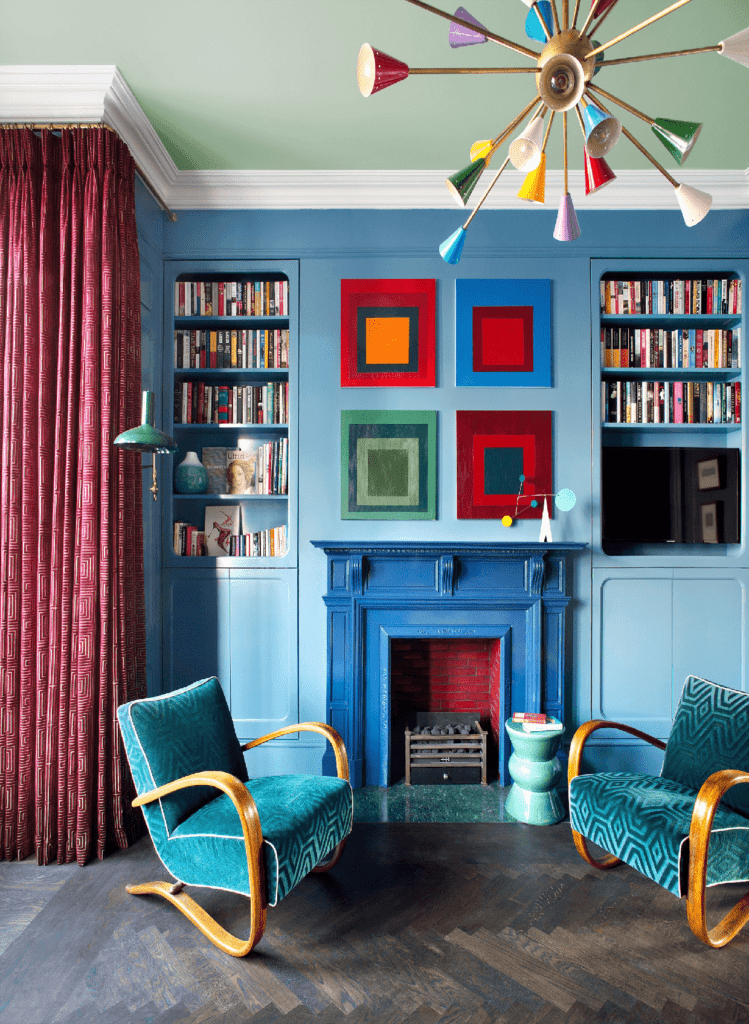
15. Combine High & Low-cost Points
- Pedigree does not equal better inherently (whether it be art, furniture, or dogs). Consider an “unknown” artist or designer who buys for you and your specifications depending on form, comfort, and the way the arts or furniture operate.
- The modest things can be the most exquisite thing in a room and have the most spirit. Do not be afraid to combine high points with low prices. To be essential, not everything must be precious. In contrast, something you truly enjoy can be told by springing up for living room design.
16. Begin at Ground Level
- Living room design can be awesome. People always want to know exactly where to begin. I normally recommend you start from the ground up in every room: Choose the covering on the floor. If you like or have hardwood floors, tiles, stone, or wall-to-wall tapestry, it does not matter.
- The first thing you think about your floor is how other pieces lie in space. You have more choices for color or tapestry if you choose a neutropenic tone or natural fiber without a lot of pattern or color. You can draw colors from the rock to make a paint palette when starting with an antiqued rug.
- All tasks should be planned together, or you end up having the circus effect: so many things happen without all of the room working together. You automatically restrict your look when beginning with a sofa or polished seats.
- For anything like an area tackle, there is more variety for thousands or even hundreds of opportunities. This is where choices are available and then the layer parts will start. It is much better to decide first and then layer the final floor for the living room design.

If you remember the commonest living room errors, the place in your dreams may not be too out of control.
Common Living Room Design Errors
1. Falling Through The View
The “shape of a showroom,” in other words, the room that looks like it’s all been bought from the same shop, according to architect Elizabeth Roberts from New York. “We need to combine modern elements with antique elements in an interior, electronics and individualized space to create an exciting space,” she says. “We love the antique furniture patina in particular combined with new upholstery,” Dick says.
2. Too Little Buying a Rug
- For Henderson, the poorly sized teapot is one of the most significant insulators in living room décor. “America has had ‘tiny rug’ syndrome for too long,” says she. “I see it almost every day and it hurts me — especially because it can be so easily avoided.” Massive rugs can be costly and can sound like such a frightening commitment, but the designer thinks it’s one of the most valuable things a room has to offer.
- “Without a small living space, stay away from something smaller than 6-by-9 ft. There might be a four-by -6-foot room in the kitchen or at an entry, but that would certainly not fit in the living room,” said Ms. Henderson. “If you’re not living quarters, you ought to get at least a 10-by-10-foot robot.
3. Choosing The Wrong Sofa
- Designers agree: A large living room begins with a big couch. “I’m very much in and the owners are very happy with me, but they have a couch with which they’d like to live,” stylist and TV host Emily Henderson says.
- I wanted to split the news from the same couch over and over. I’d never had the space they would use,” said Henderson. “They’re not going to replace it, so it isn’t too old and they don’t care.”
- DISC Interiores’s David John Dick agrees, “We hear from our clients time and again if they have not bought a sofa in the past, or it’s not too large or too big for their space; a good sofa is a key element of comfort in the living rooms, but also central to the way a room felt or looked.” “Impulse purchases are perfect for accessories and side tables, but never for a couch because it can be really expensive,” says Dick.
4. Planning The Design Poorly
- While it might be tempting to push a sofa on a wall opposite the TV stand one day, Roberts reminds us that a big room layout has more to be designed.
- “It is important, particularly if the room is long and narrow, like many townhouses and lofts, that we look for and build conversation clubs,” she said.
5. Incorrect Hanging Sculpture
- “Art hung the wrong way in the wall, like a guy with a really bad wig in a movie,” Henderson says, “It is just sort of difficult not to see it because you would like so bad that you could just rip it off because you know that everything is much easier without it.
- While some accept that art can be hanged in the eye, the artist emphasizes that in any instance this does not happen. “Yes, the art can be in the eye, but not when your ceilings are low and not when you are tall,” she says. “If you break the wall vertically (from the bottom to the top), think of art in the third quadrant (from the floor),” says Henderson.
6. Very Far to Make It Live
During the days of empty “sitting quarters” and plastic-packed chairs, Roberts continues to be particularly careful to ensure that your living area suits the daily conveniences. She recommended, “Choose textiles and rugs that take the wear and tear of daily life.”
7. Do Not Blend Time & Style
In a house in Georgia, a design company merged contemporary furnishing with traditional crown shaping, Maroccan antiques, African beaded benches, and contemporary styles. According to Dick, the furniture for living room design was often boxed and limited by the architecture of their home and selected based on the architecture and the period of their home.
Conclusion
A living room is an outstanding space for reckoning chaos, such as an image gallery wall, mixed pillows, open storage baskets, and fun furniture like the tepee-inspired tent.
Trying to make perfect order means that anything out of place is a sore thumb while taking a bit of organized confusion means a dropped toy or draped blanket looks at home from time to time.
Did you get a little living room furnished to make it feel more spacious? Or did you find things cozier in a large living room? Our given some special tips will help you enough to find out your favorite & desired living room design.


